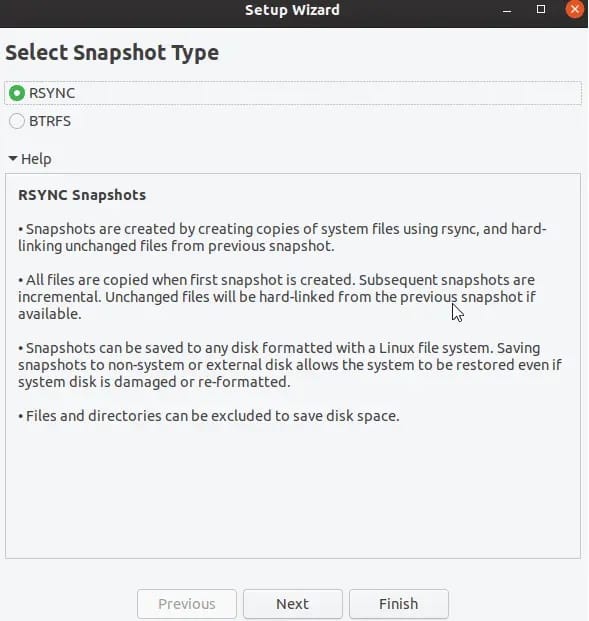How To Install Timeshift on CentOS Stream 10

Maintaining a stable and reliable system is crucial, whether you are managing a personal computer or a server. System failures, data corruption, and accidental misconfigurations can lead to significant downtime and data loss. One effective strategy to mitigate these risks is to implement a robust backup and restore solution. Timeshift is a powerful utility designed to protect your system by taking incremental snapshots, allowing you to revert to a previous state in case of issues. This guide provides a detailed walkthrough on how to install Timeshift on CentOS Stream 10, ensuring you can safeguard your system with ease.
Understanding Timeshift
Timeshift is a system restore tool for Linux that functions similarly to System Restore in Windows or Time Machine in macOS. It creates snapshots of your system at regular intervals, capturing the state of system files, applications, and configurations. Should something go wrong, you can quickly restore your system to a previously working state.
Key Features
- System Snapshot Capabilities: Timeshift excels in creating full system snapshots, ensuring comprehensive protection.
- Rsync and BTRFS Support: It supports two modes of operation: RSYNC for traditional file systems and BTRFS for systems using the BTRFS file system.
- Automated Backup Scheduling: You can automate backups with flexible scheduling options, ensuring regular protection without manual intervention.
- Incremental Backup System: Timeshift uses an incremental backup approach, saving only the changes made since the last snapshot, thus conserving storage space.
Prerequisites
Before installing Timeshift, ensure your CentOS Stream 10 system meets the following prerequisites.
- System Requirements: A running installation of CentOS Stream 10 is required.
- Storage Space Considerations: Ensure you have sufficient free storage space to store the snapshots. The amount of space required depends on the size of your system and the number of snapshots you intend to keep.
- Root Access Verification: You need root or sudo privileges to install and configure Timeshift.
- CentOS Stream 10 System Update Status: It’s advisable to update your system to the latest packages before installing Timeshift.
To update your system, open a terminal and run the following commands:
sudo dnf updateInstallation Methods
Installing Timeshift on CentOS Stream 10 involves setting up the necessary repositories and using the DNF package manager. Follow these steps to install Timeshift successfully.
Repository Setup
CentOS Stream 10 may not have Timeshift in its default repositories. You might need to add an external repository to access the Timeshift package.
First, install the EPEL (Extra Packages for Enterprise Linux) repository, which provides additional packages for CentOS. Open a terminal and run:
sudo dnf install epel-releaseAfter installing EPEL, enable the PowerTools repository, as it contains dependencies required by Timeshift:
sudo dnf config-manager --set-enabled powertoolsInstallation Commands
Now that the necessary repositories are enabled, you can proceed with the installation of Timeshift.
Run the following command to install Timeshift:
sudo dnf install timeshiftThe DNF package manager will handle the installation, resolving any dependencies automatically.
Once the installation is complete, verify it by checking the Timeshift version:
timeshift --versionInitial Configuration
After installing Timeshift, you need to configure it to suit your needs. This involves selecting the snapshot type, choosing a storage location, and setting up a backup schedule.
Snapshot Type Selection: RSYNC vs BTRFS
Timeshift supports two snapshot modes: RSYNC and BTRFS. The choice depends on your file system and specific requirements.
- RSYNC: This method works with any file system and creates snapshots by copying files. It is suitable for systems that do not use BTRFS.
- BTRFS: This method is designed for BTRFS file systems and uses BTRFS subvolumes to create snapshots. It is faster and more efficient than RSYNC but requires a BTRFS file system.
To configure Timeshift, launch it from your desktop menu or by typing timeshift in the terminal. You might be prompted to enter your sudo password.
In the Timeshift window, select your preferred snapshot type (RSYNC or BTRFS) and click “Next.”
Storage Location Setup
Next, you need to select a storage location for your snapshots. It is highly recommended to choose an external drive or a separate partition to avoid losing snapshots if your primary drive fails.
Select the desired storage location from the list and click “Next.”
Schedule Configuration
Timeshift allows you to schedule automatic snapshots at regular intervals. You can set up daily, weekly, or monthly snapshots, depending on your needs.
Configure the schedule according to your preferences and click “Next.”
Creating Your First Backup
After the initial configuration, create your first backup to ensure everything is set up correctly. This manual snapshot will serve as a baseline for future backups.
Step-by-step Process
- Launch Timeshift from the desktop menu or terminal.
- If prompted, enter your sudo password.
- In the main window, click the “Create” button to initiate a new snapshot.
- Timeshift will display a progress bar as it creates the snapshot.
- Once the snapshot is complete, a new entry will appear in the snapshot list.

Managing Snapshots
Effectively managing your snapshots is crucial to maintaining a healthy backup system. Timeshift provides several options for managing snapshots, including creating, viewing, and deleting them.
Basic Operations
- Creating Manual Snapshots: You can create manual snapshots at any time by clicking the “Create” button in the main window. This is useful before making significant system changes.
- Viewing Existing Backups: The main window displays a list of all existing snapshots, along with their creation dates and descriptions.
- Deleting Old Snapshots: To free up storage space, you can delete old snapshots that are no longer needed. Select the snapshot you want to delete and click the “Delete” button.
- Setting Retention Policies: Configure retention policies to automatically delete old snapshots based on predefined rules. This helps manage storage space efficiently.
Restoration Process
The primary purpose of Timeshift is to restore your system to a previous state when things go wrong. The restoration process is straightforward and can be performed from within the Timeshift application.
System Recovery
- Launch Timeshift.
- Select the snapshot you want to restore to.
- Click the “Restore” button.
- Follow the on-screen prompts to complete the restoration process.
Timeshift will restore your system to the state it was in when the snapshot was created. This includes system files, applications, and configurations.
Emergency Restoration
In cases where your system fails to boot, you can perform an emergency restoration using a live CD or USB drive.
- Boot from a live CD or USB.
- Install Timeshift on the live system.
- Launch Timeshift.
- Select the storage location where your snapshots are stored.
- Choose the snapshot you want to restore.
- Follow the prompts to restore your system.
Boot Recovery Options
Sometimes, the bootloader may be damaged, preventing your system from booting even after a successful restoration. In such cases, you may need to reinstall the bootloader.
Use a live CD or USB to access your system and reinstall the bootloader using the appropriate tools for your bootloader (e.g., GRUB).
Advanced Configuration
Timeshift offers several advanced configuration options that allow you to customize the backup process to suit your specific needs.
Customization Options
- Include/Exclude Paths: You can specify which paths to include or exclude from the snapshots. This is useful for excluding large data directories that do not need to be backed up.
- Scheduling Options: Customize the snapshot schedule to create backups at specific times or intervals.
- Filter Settings: Use filters to exclude certain types of files from the snapshots, such as temporary files or cache directories.
Troubleshooting
While Timeshift is generally reliable, you may encounter issues during installation or operation. Here are some common problems and their solutions.
- Dependency Issues: If you encounter dependency issues during installation, ensure that you have enabled the EPEL and PowerTools repositories.
- Insufficient Storage Space: If you run out of storage space, delete old snapshots or allocate more space to the storage location.
- Restoration Failures: If a restoration fails, try restoring from a different snapshot or check the integrity of the storage location.
Congratulations! You have successfully installed Timeshift. Thanks for using this tutorial for installing the Timeshift on CentOS Stream 10 system. For additional help or useful information, we recommend you check the official Timeshift website.